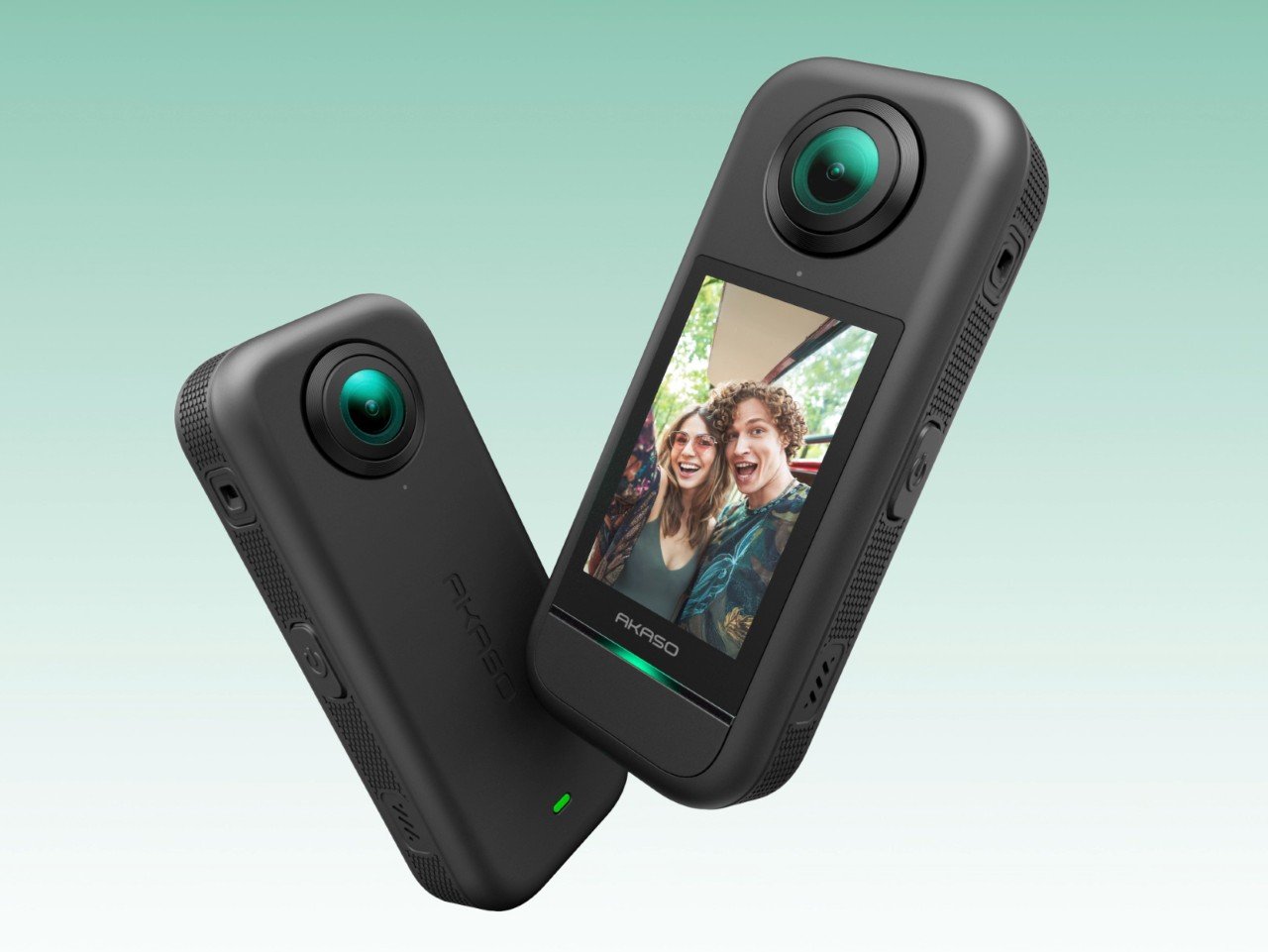When it comes to expanding product portfolios, companies typically play it safe by iterating on their existing lineups. AKASO, however, seems determined to color outside the lines. After making waves with their Seemor night vision goggles that delivered full-color visibility in pitch darkness (a remarkable feat of engineering that caught my attention last year), the company is now pivoting into entirely new territory with their first 360-degree action camera.
This strategic expansion feels particularly intriguing because AKASO isn’t simply following trends but applying their technological expertise across different visual capture domains. The Seemor goggles demonstrated AKASO’s proficiency with AI image processing, dual-sensor systems, and making complex optics accessible to everyday users. Now they’re bringing that same DNA to the 360-degree camera space with a $199 price tag that absolutely shatters the market’s status quo, potentially upending the Insta360 and DJI hegemony that has dominated the landscape for years.
Designer: Akaso
The new AKASO 360 comes equipped with dual 1/2-inch 48MP CMOS sensors capable of recording 5.7K spherical video at 30fps. For context, that resolution sits comfortably in the sweet spot between consumer and prosumer needs, offering enough pixel density for impressive playback while keeping file sizes manageable. The camera weighs in at a pocket-friendly 180g, substantially lighter than their 500g Seemor night vision system, making it practical for extended handheld use or mounting on helmets, bikes, or drones.
AKASO has wisely incorporated AI tracking into the 360 camera, allowing it to automatically follow subjects within the frame regardless of direction. This feature proves particularly valuable in 360 capture since reframing during post-production becomes significantly easier when the software has already identified and tracked the main subject. The camera also includes 360-degree horizon lock stabilization, ensuring level footage regardless of how wildly the camera might rotate during action sequences. Both features leverage machine learning algorithms similar to those developed for the Seemor’s low-light image processing.
Battery performance reveals practical engineering decisions that align with real-world usage. While the Seemor night vision goggles shipped with two 3,250mAh batteries providing up to 8 hours of operation, the 360 camera opts for a single 1,350mAh battery delivering approximately 60 minutes of 5.7K recording. This prioritizes portability over marathon sessions, acknowledging that most 360 content creators capture shorter clips rather than continuous footage.
The design itself borrows heavily from Insta360’s successful formula, with dual lenses positioned on the upper section and a 2.29-inch touchscreen below. The similarity raises questions about differentiation in a competitive market, but AKASO’s history suggests their advantage will come through pricing and feature accessibility rather than revolutionary form factors. The weatherproof construction indicates outdoor durability, though specific environmental ratings haven’t been detailed.
For creators looking to enter spherical video without emptying their wallets, AKASO’s disruptive pricing strategy transforms the conversation entirely. At $199, the AKASO 360 costs less than half of its mainstream competitors while offering comparable core specifications. If they can maintain the impressive quality demonstrated in their Seemor night vision technology at this aggressive price point, Insta360 and DJI face a serious threat from a company previously known for budget action cameras. The 360-degree camera market has suddenly become a battlefield where the underdog has armed itself with a price advantage that established players cannot easily counter.
The post Akaso’s $199 360° Camera directly challenges Insta360 and DJI Osmo’s duopoly first appeared on Yanko Design.

